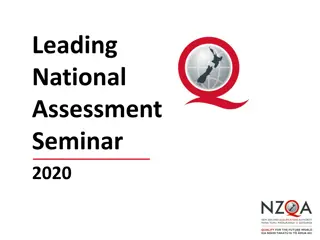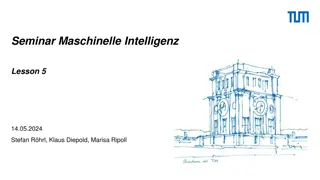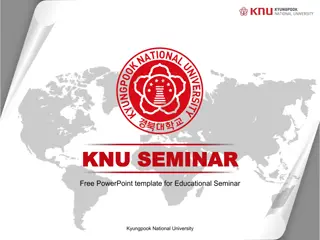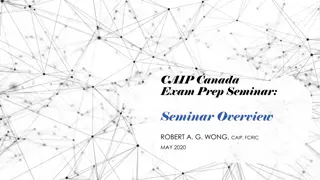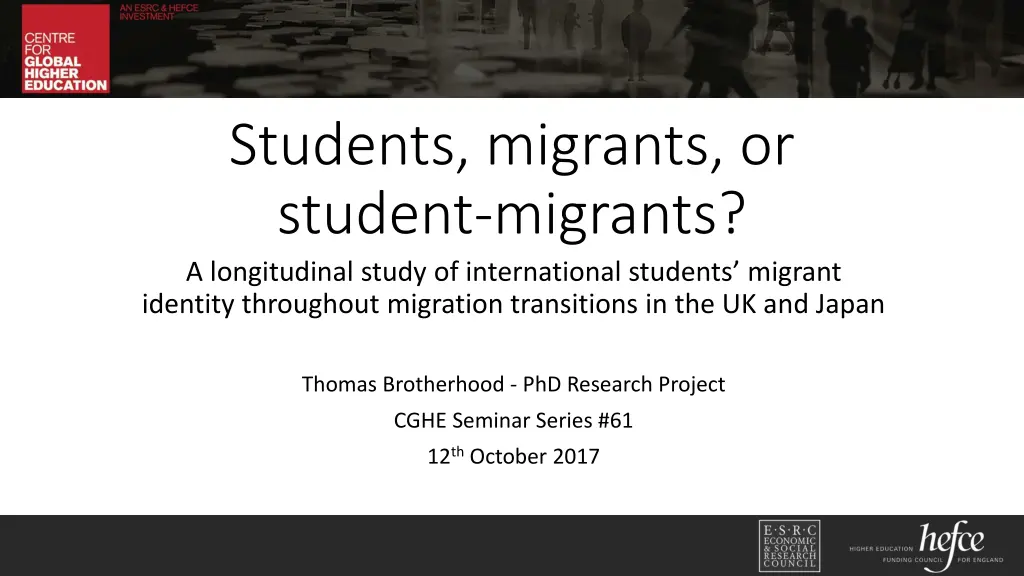
International Student Migration Study
Explore a longitudinal study on international students' migrant identity during migration transitions in the UK and Japan. Analyze the growth, significance, and qualitative aspects of international students. Investigate the structural embedding of international students in these countries and their impact on education, economy, and diplomatic efforts.
Download Presentation

Please find below an Image/Link to download the presentation.
The content on the website is provided AS IS for your information and personal use only. It may not be sold, licensed, or shared on other websites without obtaining consent from the author. If you encounter any issues during the download, it is possible that the publisher has removed the file from their server.
You are allowed to download the files provided on this website for personal or commercial use, subject to the condition that they are used lawfully. All files are the property of their respective owners.
The content on the website is provided AS IS for your information and personal use only. It may not be sold, licensed, or shared on other websites without obtaining consent from the author.
E N D
Presentation Transcript
Students, migrants, or student-migrants? A longitudinal study of international students migrant identity throughout migration transitions in the UK and Japan Thomas Brotherhood - PhD Research Project CGHE Seminar Series #61 12th October 2017
Order of the presentation International students role in internationalisation and massification Growing attention and muddled thinking around the migration of international students Destructive interference between education, economic, and migration policy A research agenda Potential for biographical methods in research with student- migrants.
International students quantitative growth ICEF, 2015; UIS 2016; UNESCO, 2017
International students quantitative significance Country Bachelor s (%) Master s (%) Doctorate (%) Total tertiary education (%) New Zealand 16 24 46 21 United Kingdom 14 37 43 18 Switzerland 10 28 54 17 Australia 13 43 34 15 International students as share of tertiary enrolment (OECD, 2017)
International students qualitative significance Educational resources Internationalisation at home Globalizing home students International learning environment De facto ambassadors Passive affinity for host country transmitted back to home An effective public diplomacy strategy
Are internationally students structurally embedded in the UK and Japan? The UK and the silver bullet narrative (Blair, 1999) Japan s waves of internationalisation Source of financing for higher education (Chankseliani, 2017) Fundamental to Japan s public diplomacy efforts in education aid (Kamibeppu, 2016) Contribute broadly to the UK economy (Universities UK, 2017) The Nakasone Plan Project on welcoming 100,000 students from overseas (Goodman, 2007) Supplement the skilled labour pool in key fields. (Findlay, 2001) Excellence initiatives and global human resources (Yonezawa & Yonezawa, 2016) Lomer, 2017; Geddie, 2015; Kawamura, 2016; Ninomiya, Knight, & Watanabe, 2011
International students in multiple policy fields Education Policy Economic Policy International Students
International students in multiple policy fields (Contd) Economic Policy Education Policy Migration Policy International Students
Migration as a Trump Card Economic Policy Education Policy Migration Policy International Students
Relative power of various concerned ministries lies with those that govern migration UK Japan Home Office / UK Visas and Immigration; the Treasury; Department for Trade and Industrial Strategy; Department for Education etc. 17 government departments have a role in managing education-migration. Most important being MOJ, MEXT, METI, MOFA. Treasury and BIS had dominated under New Labour Ministry of Justice has ultimate authority. Home Office and UKBA/UKVI have dominated in the Coalition / Conservative era. A conservative bastion
International students in British migration policy Permanent migrant: A person who moves to a country other than that of his or her usual residence for a period of at least a year (UNSD, 2017) Adopted by the Office for National Statistics in line with international best practice (ONS, 2016) A discursive barrier to their recruitment in policy (Lomer, 2017, p. 218) Criticism Vast majority of international students do not aspire to permanent migration. There is no reason that different methods of defining student-migrants cannot be used for external data reporting and internal policy discussion
International students in British migration policy (Cont d) Narrative of public concern National security concerns Prevent Bogus students Negative social impact Net-migration targets to reduce net migration to the tens of thousands International students a soft target for reducing net-migration Also a bad target
International students in Japanese migration policy Pillars of migration policy (Tsuda & Cornelius, 2004) No unskilled migrants will be admitted The government will only facilitate highly skilled and professional workers in entering the country All foreign workers must be admitted on a temporary basis Proliferation of side-door routes to migration Shuugakusei Nikkeijin Trainee programs
International students in Japanese migration policy Recent attempts at liberalization aimed at highly skilled foreigners and generous transitional arrangements for international students (Oishi, 2014) Year Title Reference to HS Migration Agencies 2003 E-Japan Strategy II Increase the number of ICT migrant workers to 30,000 Cabinet Office 2008 300,000 International Students Plan Accept 300,000 international students by 2020 Cabinet Office 2009 Fourth Immigration Control Plan Introduce a points system to promote HS migration Ministry of Justice 2010 New Growth Strategy Double the number of HS migrants; introduce points based system Cabinet Office 2011 Policy Guidelines for Regulatory and Institutional Reform Establish a system where HS migrants can bring parents Cabinet Office 2012 Points System for HS Personell Provide incentives to HS migrants to work in Japan Ministry of Justice 2013 Japan Revitalisation Strategy Revise points system to offer more incentives to HS migrants Cabinet Office
International students in Japanese migration policy International education most acceptable form of immigration Halts demographic decline Youthful workforce Feeds the beast (Hansen, 2016) The initial influx of international students a lifeline of Japanese universities for securing enrolment and increasing competitiveness in a global education market (Kawamura, 2016) Furthermore, international students already make up the largest group of foreign born residents in Japan Linguistically and culturally adapted.
International students in Japanese migration policy Implementation has lagged behind expectations While 63% of international students wish to remain, only 23% succeed Failure of recent Highly Skilled Foreign Professional Visa Reasons For a period Protectionism within HEIs Lack of concerted efforts towards integration - Welfare policies Unreceptive labour market The reoccurrence of these debates suggest that there are some inherently conservative forces in Japanese society, which makes internationalization problematic. (Goodman, 2016)
Variable manifestations of shared problems Inappropriate administrative practices Discursive barriers to meaningful reform Engrained ideological and cultural practices Miscommunication between policy and public Ineffective or clumsy policy interventions
Dominance of neoclassical approaches to understanding and managing migration Great progress in terms of modeling stay/return decisions and determinants of non-migration. But this does little to challenge or improve conventional framings of migration systems Many of the problems that were described above are at least in part attributable this limited analytical frame
Emerging research agenda Research sensitive to the temporal span of students experiences Biographical research (Bal & Williams, 2004; King & Raghuram, 2013) Processual nature of their decision making (Carlson, 2013; Hazen & Alberts, 2006). Students own perspectives on their motivations, objectives and experiences (Brooks & Waters, 2011, p. 2). Re-engagement with the human face of migrant transitions (Favell et al., 2007). Greater consideration of the life-course (Findlay et al., 2012; Findlay et al., 2015). Agentive perspective on structure-agency interactions within the education-migration nexus (Bal & Williams, 2004; Hazen & Alberts, 2006).
Provisional research questions In what ways may international students come to consider migration transitions? To what extent and how may individual student-migrants follow their preferred pathways, and what might be effects for these students and their hosts? How may the social, civic, and political identities of student-migrants change during their migration transition?
Target population and selecting participants National Case Study Degree-mobile international students who self- identify as desiring to migrate to the host country. Elite Institution in Global City Nationally regarded institution in regional city/ town Mid/Lowly regarded university with local focus
The biographical-narrative interpretive method Biographical-Narrative Entry Interview Semi-Structured Exit Interview Subsession 1 Focused life history via Single Question for Inducing Narrative (SQUIN) Subsession 2 Detail confirmation and narrative Follow-Up Subsession 3 Mutual reflection on pathways, trajectories, and meanings Intervening time of 9-15 months
Parallel strands of analysis A gesalt emerges wherein the two types of decisions are mutually informing in understanding the dynamic subjectivity and agency of the study participants, and their conditions (Wengraf, 2004) Subsession 1 Subsession 2 Decisions and particular incidents within the living of the lived life . Subsession 3 Decisions within the telling of the told story . Mutual reflection on both tracks of the analysis.
Chordal triad of agency (Emirbayer and Mische, 1998) The practical-evaluative element The iterational element The projective element Habitual action Practical and normative judgments propensity to exert agency in pursuit of change to structural relations Imaginative action, creation of identity and narrative selective reactivation of patterns of action
Students, migrants, or student-migrants? A longitudinal study of international students migrant identity throughout migration transitions in the UK and Japan Thomas Brotherhood - PhD Research Project CGHE Seminar Series #61 12th October 2017


